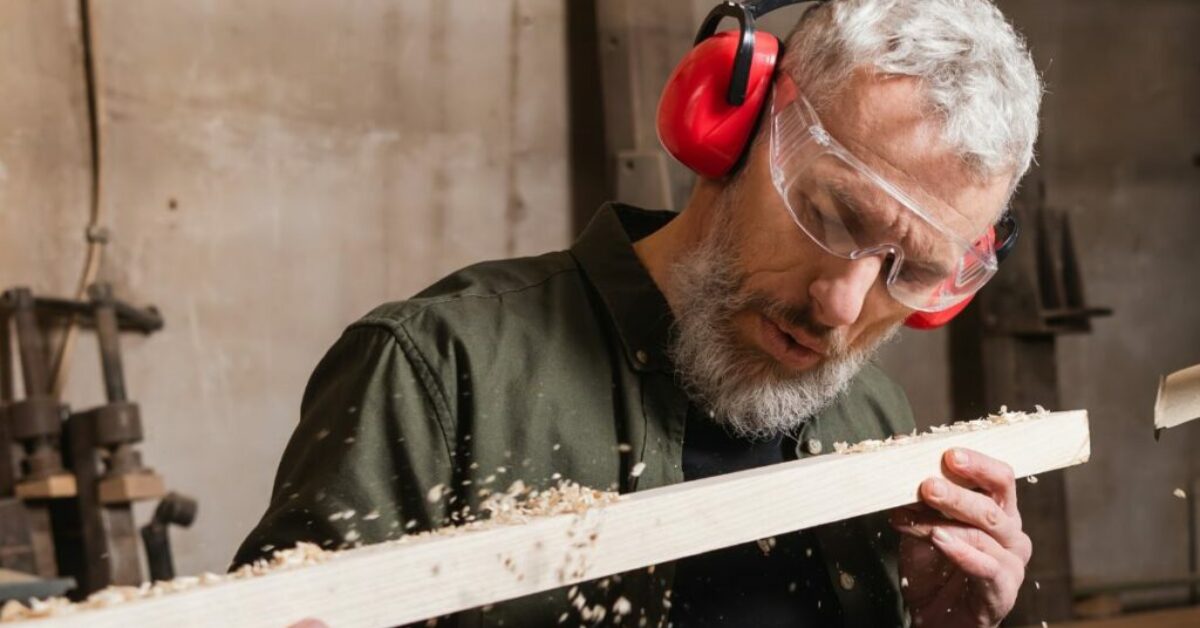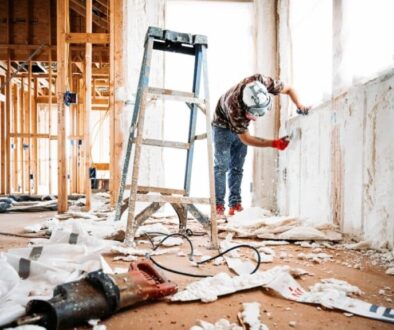What Kind Of Goggles Should You Use For Woodworking?
As a woodworker, eye protection should be a top priority. Safety goggles are a crucial piece of equipment that can protect your eyes and help prevent long-term damage. With a variety of options available, it can be overwhelming to choose the right type of goggles. In this article, we’ll help you understand the importance of eye protection, outline the various types of goggles, and explore features to consider when selecting the right pair.
Understanding the Importance of Eye Protection in Woodworking
Woodworking is a craft that requires a great deal of attention to detail and skill. Whether you are a professional woodworker or a hobbyist, it is essential to prioritize your safety. Eye protection is one of the most crucial aspects of woodworking safety, as it can prevent serious injuries and long-term damage to your vision.
When working with wood, there are a variety of activities that can pose a risk to your eyes. One of the most common hazards is sawdust, which can easily fly into your eyes and cause irritation or injury. Additionally, wood chips and flying debris can cause lacerations or even permanent damage to your vision. Chemicals found in wood stains and finishes can also be hazardous to your eyes, leading to irritation or even chemical burns.
Common Eye Hazards in Woodworking
Woodworking involves a variety of operations that can lead to eye hazards. Here are some examples:
- Using saws, routers, and other power tools: These tools can create a significant amount of debris and dust, which can easily fly into your eyes.
- Sanding, drilling, and shaping wood: These activities can create small particles that can irritate or injure your eyes.
- Finishing operations such as staining or applying varnish: The chemicals used in these processes can be hazardous to your eyes if they come into contact with them.
- Handling wood or metal stock: Splinters, chips, and other debris can easily fly into your eyes while handling these materials.
- Working in dusty or dirty environments: Dust and debris can easily irritate your eyes and cause discomfort.
Long-term Effects of Inadequate Eye Protection
When working with wood, eye injuries can be serious, leading to permanent vision damage or blindness. Without proper eye protection, the debris and particles created by woodworking can cause various eye problems. These problems include dry eyes, eye irritation, and corneal abrasions or cuts. In the long run, any damage to your eyes can be a serious and costly medical issue. Therefore, it is essential to protect your eyes using the right kind of goggles.
When selecting goggles for woodworking, it is crucial to choose a pair that fits properly and provides adequate coverage. Look for goggles that are made from durable materials and have lenses that are resistant to scratches and impact. Additionally, consider goggles that have ventilation to prevent fogging and discomfort during use.
Overall, eye protection is an essential aspect of woodworking safety. By taking the time to choose the right goggles and wear them consistently, you can prevent serious injuries and ensure that you can continue to enjoy woodworking for years to come.
Types of Goggles for Woodworking
When it comes to woodworking, safety should always be your top priority. One of the most important things you can do to protect yourself is to wear the appropriate eye protection. There are several types of goggles to consider, each with their own unique features and benefits. Here are some additional details about the common types of goggles you may come across:
Safety Glasses
Safety glasses are a popular choice for woodworkers, as they are designed to be worn over your regular glasses. They feature polycarbonate lenses that are tough and resistant to impact, providing great protection for your eyes. One of the benefits of safety glasses is that they allow you to keep your regular glasses on, so you don’t have to sacrifice vision correction for eye protection.
In addition to impact resistance, many safety glasses also offer protection against UV rays. This is especially important if you are working outside or in a well-lit area. Some safety glasses even have anti-fog coatings to prevent them from fogging up during use.
Over-the-Glasses (OTG) Goggles
If you wear prescription glasses, you may want to consider OTG goggles. These goggles are specifically designed to accommodate glasses underneath, offering extra protection. They have oversized frames that fit over your regular glasses, and a tighter seal around the frames to prevent gaps that could allow small particles to enter your eyes.
OTG goggles come in a variety of styles, from basic clear lenses to tinted lenses for outdoor use. Some even have adjustable straps for a more secure fit. If you’re not sure which OTG goggles are right for you, consider trying on a few different styles to see which ones feel the most comfortable.
Full Face Shields
If you’re looking for maximum coverage and protection, a full-face shield may be the way to go. These shields cover your entire face with a clear shield, protecting not only your eyes but also your nose and mouth from dust, debris, and other dangerous particles. Full-face shields are especially useful for woodworkers who use power tools that generate a lot of debris.
One thing to keep in mind with full-face shields is that they can be heavy and cumbersome to wear for long periods of time. However, many models have adjustable straps and padding to make them more comfortable to wear. Some even have built-in fans to help circulate air and prevent fogging.
Prescription Safety Glasses
If you wear prescription glasses and don’t want to wear goggles over them, you may want to consider prescription safety glasses. These glasses have prescription lenses built into the goggles, combining the functionality of safety eyewear with the vision correction of prescription glasses.
Prescription safety glasses come in a variety of styles, from basic clear lenses to tinted lenses for outdoor use. Some even have specialized coatings to protect against glare and UV rays. If you’re considering prescription safety glasses, be sure to talk to your eye doctor to ensure you get the right prescription for your needs.
Ultimately, the type of goggles you choose will depend on your personal preferences and the type of woodworking you do. No matter which type you choose, be sure to wear them consistently and correctly to ensure maximum protection for your eyes.
When it comes to woodworking, safety should always be a top priority. One of the most important safety measures is to protect your eyes from flying debris and dust. This is where woodworking goggles come in handy. However, not all goggles are created equal, and it’s important to choose the right pair for your needs.
In addition to the features mentioned above, there are a few other things to consider when selecting the right pair of goggles for woodworking. One factor to consider is the shape of the goggles. Some goggles are designed to fit over prescription glasses, while others are more streamlined and can be worn on their own.
Another factor to consider is the color of the lens. Clear lenses are great for general woodworking tasks, while tinted lenses can be useful for specific tasks such as sanding or working with stains and finishes.It’s also important to consider the quality of the goggles. Cheaper goggles may not offer the same level of protection as higher-end models. Look for goggles that meet ANSI Z87.1 standards, which means they have been tested and approved for impact resistance.
When using woodworking goggles, it’s important to wear them properly. Make sure the goggles fit snugly against your face and that the straps are adjusted properly. If the goggles are too loose, they may fall off during use, leaving your eyes unprotected.
Overall, choosing the right pair of woodworking goggles is essential for protecting your eyes and ensuring your safety in the workshop. By considering the features mentioned above, you can select a pair that is comfortable, effective, and built to last.
Proper Care and Maintenance of Woodworking Goggles
Woodworking goggles are an essential tool for any woodworker. They protect your eyes from flying debris and dust, which can cause serious injury or damage to your vision. To ensure that your safety goggles are effective, you need to be careful to maintain them properly. When you maintain your goggles properly, you can extend their lifespan and protect your eyes from injury as long as possible. Here are a few maintenance tips to keep in mind:
Cleaning Your Goggles
You should always keep your goggles clean by wiping the lenses clean frequently. Use a clean, soft cloth or an optical cleaning solution designed for goggles to wipe away any dirt, moisture or debris from the lenses that would otherwise interfere with visibility. It is important to note that if you are working in an environment with a lot of dust or debris, you may need to clean your goggles more frequently.
It is also a good idea to clean the frame of your goggles. Sweat and oils from your skin can build up on the frame and cause discomfort or irritation. Use a mild soap and warm water to clean the frame, and be sure to dry it thoroughly before wearing your goggles again.
Inspecting for Damage
Always check your goggles to ensure they are in good condition before wearing them. Inspect the lenses for any scratches, cracks, or other damage and replace them immediately if they are damaged. Even small scratches or cracks can compromise the effectiveness of your goggles and put your eyes at risk.
When inspecting your goggles, also check the frame for any signs of damage or wear. If the frame is cracked or broken, it may not provide adequate protection for your eyes. Replace the goggles if the frame is damaged.
Replacing Goggles When Necessary
With time, the effectiveness of your goggles can reduce. You should replace your goggles when necessary to ensure they continue to offer effective protection. If your goggles become scratched or damaged, or if the lenses start to fog up repeatedly, it’s best to replace them promptly.
It is also important to replace your goggles if they no longer fit properly. Goggles that are too loose or too tight can cause discomfort or allow debris to enter your eyes. Make sure your goggles fit snugly but comfortably, and replace them if they no longer fit properly.
By following these simple maintenance tips, you can ensure that your woodworking goggles provide effective protection for your eyes and last as long as possible.
Implementing Safety Protocols
Implementing safety protocols is essential and can help reduce accidents significantly. Train yourself and those working in your workspace on the correct safety procedures to minimize accidents and ensure that they know the proper way to use machinery and tools. Always wear safety gear such as goggles, gloves, and ear protection when necessary. Make sure that all machinery is properly maintained and inspected regularly to avoid any malfunctions that could result in accidents.
By following these steps, you can create a safe woodworking environment that will help you avoid accidents and work more efficiently. Remember that safety should always be your top priority, and taking the necessary precautions will help you enjoy woodworking for years to come.
Choosing the best goggles for woodworking is critical to keep your eyes safe from damage. With the information provided, you should have a better idea of the type of goggles to purchase and the various features to consider when selecting the right pair. Remember to wear protective gear such as hearing protection, dust masks, and clothing to prevent any injuries. Even after taking precautions, keep in mind that accidents still can happen. Therefore, always remain vigilant and be sure to follow safe work procedures and take your time while performing woodworking tasks.




